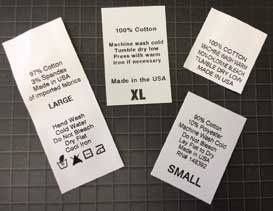Monica Mathur
I have been teaching home science for 24 years. That’s nearly a quarter of a century, but I have a very strong liking and commitment to my subject. My school teaching played a pivotal role in my relationship with the subject. My post graduation at M.S.University, Baroda followed by my 9.5 year stint at Maharani Gayatri Devi Girls School, Jaipur, kept me hooked and engaged in developing deeper nuances of the subject from teaching cooking, first aid, stitching, knitting, embroidery to biotechnology, food sciences and dairy sciences.
Exploring home science
Traditionally the subject was called domestic sciences which was changed to home science and is currently called human ecology and family sciences. Over the years, the curriculum has been aligned to the National Curriculum Framework 2005. The subject offers a mix of food, nutrition, textiles, interior designing, landscaping, sociology and human psychology, growth and development of children and pre-school education.
It also entails concepts of finances in the family, banking, entrepreneurship, consumer protection and a myriad allied aspects of living from micro to macro levels. Home science students have taken up diverse allied careers as clinical dietitians, in the hospitality sector, catering enterprises, dairy technology and the like. Many male students are doing exceptionally well as hotel managers and even running cloud kitchens.
Curriculum
The curriculum is well rounded to provide interdisciplinary perspectives which give immense opportunities to work in industry sectors, teaching at various levels, research and development, NGOs as well as entrepreneurial ventures such as boutiques, cake shops, etc.
It has a few interesting, engaging and challenging areas of teaching and learning, such as creative study and practical work and a lot of project work as well. It’s been a continuous learning trajectory for me as well as other teachers. The inherent field exposures and first hand experiences of learning from household situations encourages the child to appreciate the subject when she/he takes up in class 11. I let the children observe with direction and diligence and learn by their own experiences. Asking them to research the garments that enhance their personality or calculating their own BMR (Basal Metabolic Rate) excites them to the hilt. It’s a huge amount of reading that I have to do.

It’s also been exhilarating to expose the students to trained hands of pre-primary staff when our students do visit them for observing 3+, 4+ year old students in their classroom. A demo with the biology teacher to grasp food science and technology as well as canteen management have been planned in upcoming sessions. A wonderful project on processed label information was done as a pre-requisite. Block printing, tie and dye, crafts of Meghalaya were done as part of art integrated learning. A lot of interest was aroused while reading ‘Care’ labels on readymade garments. Certain activities such as rangoli decoration and ikebana arrangements (though not part of the current curriculum) are done to help students develop keen observation and creative talent.
In a way, we stretch the limits of students to bring out the best in them. But the number is on the decline due to the conventional approach of people towards the subject. On occasion, students do find stitching challenging, but as far as theory is concerned the portions are relatively easy to grasp and do not require any rote learning. A little bit of encouragement and tips help them score well in the subject. Most problem areas have been erased in the revised curriculum.
Unfortunately, CBSE hasn’t done much professional development in our subject since it last changed in 2019. We have several informal groups where teachers share their ideas/strategies to teach the subject and make it more engaging for the students. The abrupt timing of change in the curriculum and online teaching-learning process made it challenging but we made use of virtual field visits, cooking videos and the like. I personally engage in a lot of reading and update my knowledge from online reading and being part of social media platforms.
Perception about home science
We have a fairly big community of experienced teachers who were working for NCERT and SCERT to develop and revise the syllabus, but for reasons best known to the CBSE, the implementation of the new syllabus has been delayed by more than 10 years. It’s taken a toll on the beauty of an immensely popular subject of the British and elite Indian women.
The subject has currently lost its sheen among students in the school due to better exposure to fine arts and psychology as they visualize rewarding careers and opportunities in these courses. But with a lot of emphasis on skill development, there are many career opportunities that home science can offer. Tweaking the subject combinations offered in class 11/12 can attract more students.
Girls are opting for it, they’re still interested in the subject. I mean, there are good numbers particularly in semi-urban schools but new schools are reluctant to open the subject choice due to newly introduced subjects like media and communication, digital computing, fashion sciences and a host of vocational training subjects started by the CBSE. Yes, the subject will suffer a slow death. There is hardly any exposure at the late middle school level, and even till 10th, students have a weak impression of the subject. A number of boys fear studying the subject due to strong gender bias attached to home science.
The author teaches at Maharani Gayatri Devi Girls School, Jaipur.
